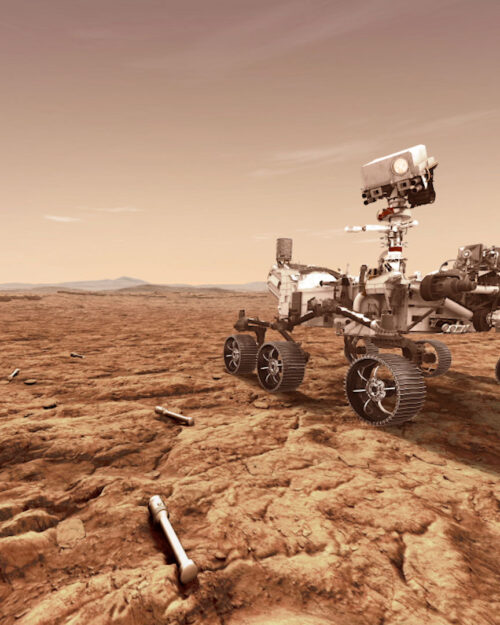August 14, 2025

By: AEOP Membership Council Dr. Karl Ochsner
What do the Voyager, Curiosity Rover, Cassini, and Pioneer missions all have in common? They are all powered by a remarkable technology called an RPS. These missions rely on an advanced technology called the Radioisotope Power System. This system functions like a long-lasting battery, providing reliable power for years or even decades, especially when solar panels are impractical due to distance, darkness, or dust.
An RPS usually uses a material called plutonium-238, which naturally gives off heat as it slowly breaks down (a process called radioactive decay). The heat from plutonium-238 is then turned into electricity using a thermoelectric generator. These work by using a temperature difference from plutonium-238 decay (heated side), while the other side is exposed to the frigid vacuum of space, often dropping below -200°C (-328°F), depending on the mission’s location. This extreme temperature difference allows thermoelectric generators to convert heat into electricity through the Seebeck effect, using two different metals. (Lee et al.) Missions like the Voyager Probes produce approximately 30 volts with an Initial power output of around 470 watts. The amount of wattage decreases over time as the radioactive decay creates less heat over time. The Voyager probes now produce less than 250 Watts after 45 years in space. (“NSSDCA – Spacecraft – Details”)
Plutonium 238 is a reliable power source for its safety factor in being able to contain the alpha radiation in the spacecraft with little gamma radiation and is much safer to use than plutonium 239, which can be used to build a nuclear bomb. The biggest problem is that it is very rare and can only be made in small amounts in nuclear reactors which makes it difficult to increase space exploration missions with a small supply of plutonium 238 supply. (“About Plutonium-238”)
The NASA TechRise Student Challenge, administered by Future Engineers, allows students to design and build an experiment to fly on a NASA-sponsored mission. Last year, my students won a coveted spot on a World View high-altitude balloon that spent approximately 4 hours in the Stratosphere at 70,000 feet. Our experiment was a thermoelectric generator with three Peltier modules. One side faced the outside air, which can drop to -58°C (-67.4°F), while the other side absorbed heat from an M4 Adafruit computer and various sensors, keeping it at a steady 24.25°C (75.65°F). This temperature differential, without the aid of radioactive materials, generated about 0.86 volts. (Less than an AA battery). Not as impressive as an RPS system output, but it proved that we can use the ambient heat from instruments to help supplement a sensor’s electrical needs.
Future missions may use alternative fuel such as Americium-241 which has ¼ of the energy output as Plutonium 238 but lasts up to 432 years. New space alternative fission reactors may also be used in future missions. (“About Plutonium-238”)
As we look to the future, innovations in thermoelectric technology and alternative fuels will be key to expanding our reach into space. The next generation of engineers and scientists— perhaps including my current middle school students—will be the ones to push the boundaries of exploration, unlocking new ways to power missions that take us farther than ever before.
Works Cited
“About Plutonium-238.” NASA Science, 7 February 2024,
https://science.nasa.gov/planetary-science/programs/radioisotope-power-systems/about plutonium-238/. Accessed 2 February 2025.
Lee, Young H., et al. “Mission Concept Designer’s Guide to the Radioisotope Power Systems Reference Book.” RPS Radioisotope Power Systems, NASA, 2014,
https://www.hou.usra.edu/meetings/lpsc2014/eposter/1478.pdf. Accessed 02 02 2025. “NSSDCA – Spacecraft – Details.” NASA – NSSDCA – Spacecraft – Details, https://nssdc.gsfc.nasa.gov/nmc/spacecraft/display.action?id=1977-084A. Accessed 2 February 2025.
“What is a Radioisotope Power System?” Department of Energy,
https://www.energy.gov/ne/articles/what-radioisotope-power-system. Accessed 2 February 2025.
Find a Volunteering Opportunity
Visit our Program Volunteers page for a tool to find the best opportunity for you.
